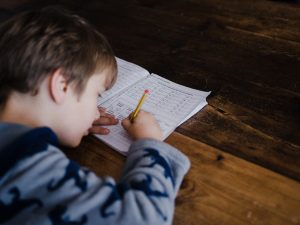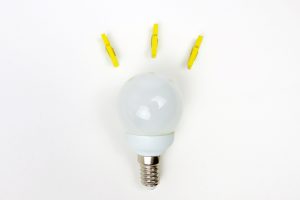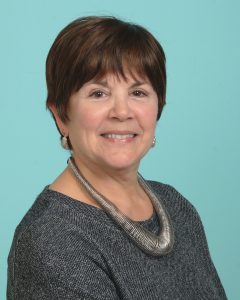BY: Laura Greenstein, ED.D.
When I was asked to problematize assessment, I was puzzled. Does that mean to turn something that is not a problem into one, or rather, quantifying students’ mistakes and pursuing accountability? Turning assessment into a problem implies that something has gone wrong when in truth, it has merely gone astray from its Latin root “Assidere,” which means to sit nearby and guide. Regrettably, assessment has been taken out of the hands of educationalists who accentuate improvement and have been replaced by periodic testing that quantifies learning and generates numerical comparisons. As of yet, scoring technologies cannot distinguish between a learner’s lack of knowledge and their misinterpretation of the question, nor can they provide advice on remediation. Below are 3 steps that can.
STEP 1: REVISIT FUNDAMENTAL IDEAS and PRINCIPLES OF ASSESSMENT
While some believe tests and assessments mean the same thing, the definitions below illuminate noteworthy differences in purpose and process.

TESTs are periodic procedures that establish the capacity or performance of someone or something (Merriam-Webster). They are explicit strategies to ascertain and verify a learner’s skills and knowledge (Wikipedia). Tests tend to be more standardized, analytical, and judgmental.
ASSESSMENTS are processes used throughout teaching and learning to check for understanding, monitor progress, identify lingering gaps, and guide improvement. They rely on varied practices to gauge learning such as rubrics, exit slips, fix the mistake, student reflections, and progress trackers. They are more adaptable and personalizable than tests (Assessment Network).
STEP 2: INCORPORATE STUDENT SELF-ASSESSMENT to DEEPEN, ENRICH, and develop OWNERSHIP of LEARNING

Classroom assessments generally offer more insights into learning than standardized tests. Student self-assessment further illuminates competencies and leads to higher-level thinking, problem-solving, and self-efficacy (Panadero, Jonsson, and Botella, 2017).
Learners engaged in their own assessment increase self-awareness. Prompts such as “I used to think__, but now I know__.” encourage insights into learning. As Anisha, a 6th grader, says, “I used to think communication was just talking and writing, but now I know it also includes listening, looking, thinking, AND patience.”
Students rarely take tests once they exit the education system, but they continue to be evaluated on their proficiencies, initiative, productivity, and more. The ability to gauge, reflect, and modify thoughts and actions is indispensable at work and home, throughout the lifespan.
STEP 3: HELP STUDENTS “SOAR” AS SELF-ASSESSORS

Have you ever said or heard something like this? “I know you believe you understand what you think I said, but I’m not sure you realize that what you heard is not what I meant” (Attributed to Allan Greenspan). Assessment can be like the Tower of Babel, where it is not easy to disentangle ever-changing and contradictory dialects. Mary Ann Burke and I have designed a straightforward and actionable acronym to support all learners as self-assessors. We call it S.O.A.R.
The SOAR model connotes Student Ownership and Agency leads to Results. It puts Students at the center of assessment by purposefully transferring Ownership to them and facilitating their Agency in ways that improve the Results and outcomes of learning. Here’s how it works:
- Put STUDENTS at the center of assessment by helping them clarify and visualize what they will be learning, compare that to what they already know and can do, describe how they plan to learn, and ways they can use their learning. In Practice: Students complete an expanded KWL chart that includes: What I think we will learn, What I know now, What I want to know, How I will find out, How can I show/use my learning.
- Offer opportunities for students to take OWNERSHIP of their learning purpose, process, and products. For example, let them decide how to organize, summarize, and display their learning using words, visuals, or performances. In Practice: Rely on coherent rubrics, sequenced through the taxonomy, that align with learning intentions. For example: Explain the main idea in your own words, elaborate on the significance of 3 key steps/events, draw conclusions or critique it, and design/produce original products and ideas.
- When students become AGENTS of assessment, they take greater charge/responsibility of their path, become participants in the learning process, and strengthen self-reliance. As learners develop deeper understanding, they gain self-confidence and become resources for each other. In Practice: Learners explain or demonstrate their understanding of the main ideas, how the author captures the reader’s attention and extends learning for deeper meaning. They may also defend a position or suggest improvements.
- The RESULTS of students being at the center of their own assessment become evident in learning outcomes. In Practice: As traditional measures evolve into student-owned assessment, they take increasing responsibility, seek to alleviate problems, and generate original ideas and solutions. Rather than relying solely on traditional test questions, learners can better reflect, investigate, analyze, and formulate ideas.
Using the SOAR sequence develops every students’ life-long self-assessment skills. In doing so, they become more accountable for their learning outcomes, analyze, can explain their misunderstandings, identify knowledge and skills in need of improvement, and self-correct their own learning. Indeed, these skills support all students in moving from academic distress to confident and successful learners.
References
Greenstein, L., and Burke, Mary Ann (2020) Rowman and Littlefield, “Student-Engaged Assessment: Strategies to Empower All Learners”
Assessment Network: Toolbox and Blogs https://www.assessmentnetwork.net/blog/ and also https://www.assessmentnetwork.net/2017/02/5-assessment-myths/
Greenstein, L. (2018) MUSTs of Assessment: in Restorative Assessment, Corwin, 2017 https://us.corwin.com/en-us/nam/restorative-assessment/book258057
Panadero, E., Jonsson, A., & Botella, J. (2017). Effects of self-assessment on self-regulated learning and self-efficacy: Four meta-analyses. Education Research Review, 22, 74–98.
Boyer, M. (2019). Balancing Skepticism and Utility in Machine Scoring. https://www.NCIEA.org/blog/essa/balancing-skepticism-and-utility-machine-scoring
About the Author

Laura is a lifelong learner and educator who has taught and assessed from preschool to graduate school, across subject areas. Her passion for educational assessment began with her dissertation and is evident throughout her work as an author of 5 books on the topic, founder of and blogger at the Assessment Network, and mentor to many teachers and learners. Through her workshops, she brings fresh ideas on a range of assessment topics from standardized to classroom, including formative, authentic, multicultural, differentiated, brain-friendly, and balanced. (Sometimes, she even talks about standardized tests.)
